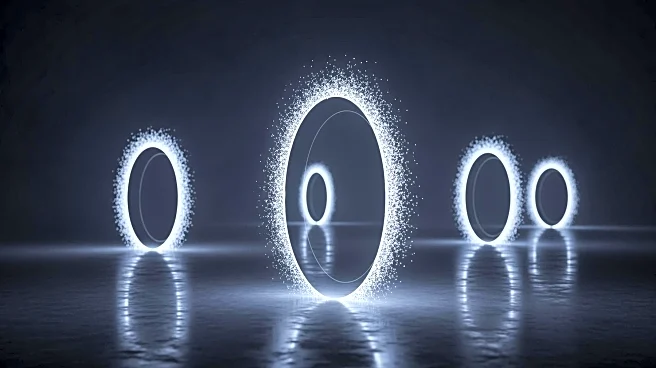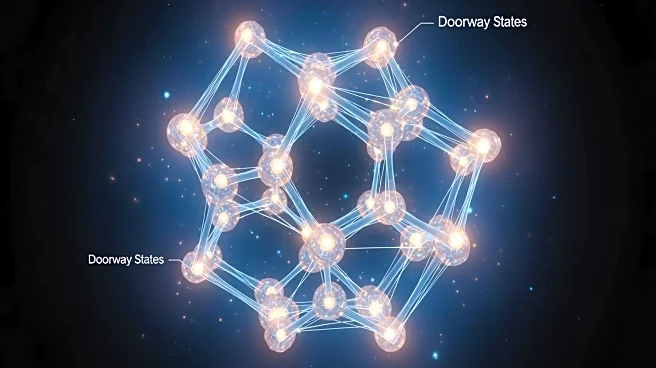What's Happening?
Researchers have successfully synthesized branched cubic platinum (Pt) mesocrystals through a process involving competitive ion adsorption. The synthesis involves mixing potassium tetrachloroplatinate
and formic acid in water, leading to the formation of Pt nanoparticles that transform into branched cubes. The process is driven by anisotropic surface potentials induced by competitive ion adsorption, which guides the alignment and attachment of nanoparticles. This method allows for the creation of mesocrystals with unique structural properties, potentially useful in various applications.
Why It's Important?
The ability to synthesize branched cubic Pt mesocrystals opens new possibilities in materials science, particularly in catalysis and electronics. The unique structural properties of these mesocrystals could enhance the performance of catalysts used in chemical reactions, leading to more efficient industrial processes. Additionally, the findings contribute to the understanding of nanoparticle behavior and surface interactions, which are critical for developing advanced materials with tailored properties. This research represents a significant advancement in the field of nanotechnology.











